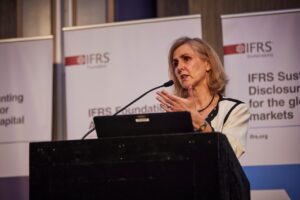- Biodiversity footprint pricing is rising: Investors are increasingly factoring biodiversity risks into their valuations, especially after key global policy events.
- Major policy events drive stock volatility: The Kunming Declaration and TNFD launch triggered significant stock price declines for firms with large biodiversity impacts.
- Transition risks signal higher returns: Firms with larger biodiversity footprints may face higher returns due to growing policy uncertainty and the risk of future regulation.
Biodiversity’s Economic Consequences
Biodiversity loss is accelerating at an alarming rate, threatening ecosystems and the economic benefits they provide. This poses substantial risks for businesses, investors, and financial markets. New regulatory efforts, like the Taskforce on Nature-related Financial Disclosures (TNFD) and frameworks from central banks, aim to address these risks. However, biodiversity’s impact on finance remains understudied.
Corporate Biodiversity Footprint (CBF): A New Metric
To bridge the gap, researchers developed the Corporate Biodiversity Footprint (CBF). Created by Iceberg Data Lab, the CBF measures biodiversity loss caused by a firm’s activities, from land use and emissions to pollution. The CBF quantifies direct and indirect impacts along a company’s value chain, spanning scope 1, 2, and 3 impacts.
For example, the Retail & Wholesale, Paper & Forest, and Food sectors show the highest average CBFs due to intensive land use and pollution contributions.
Change the World - Subscribe Now
Biodiversity Impact on Stock Returns
Three possible scenarios emerge regarding the relationship between a firm’s CBF and its stock returns:
- Higher returns due to increased transition risks from potential regulatory actions.
- Higher returns from mispricing, where firms may profit from ignoring biodiversity impacts.
- Lower returns, as shifting investor preferences favor environmentally responsible firms.
However, a 2019-2022 study found that the relationship between CBF and returns only became significant after major biodiversity-related policy changes.
Related Article: Biodiversity Investing: Cultivating wealth while safeguarding nature
Event Study:
Kunming Declaration and TNFD Launch
The October 2021 Kunming Declaration and the launch of the TNFD in June 2021 significantly impacted investor behavior. Following these events, large-CBF stocks experienced notable stock price declines. For example, large-CBF stocks dropped by 1.14% relative to smaller-CBF stocks after the Kunming Declaration, signaling increased investor awareness of biodiversity risks.
The TNFD launch similarly caused a 1.5% drop in large-CBF stocks over three days, as investors braced for potential biodiversity-related regulations.
Conclusion:
Investors Demand a Biodiversity Footprint Premium
As new regulations loom, investors are starting to demand a risk premium from firms with large biodiversity footprints, especially in countries with weaker biodiversity protections. Higher transition risks drive this premium, as firms in such regions face the prospect of stricter future regulations.
The message is clear: biodiversity risks are now a critical factor in investor decision-making.













